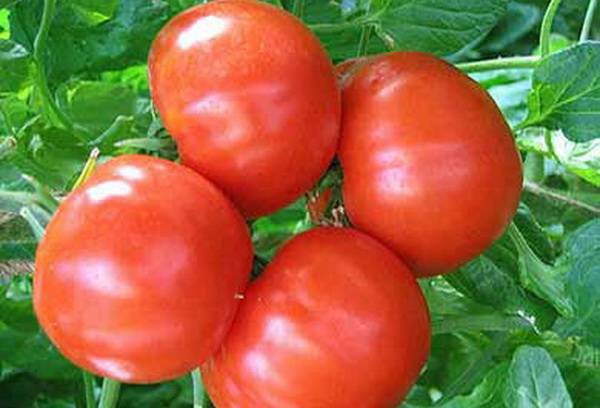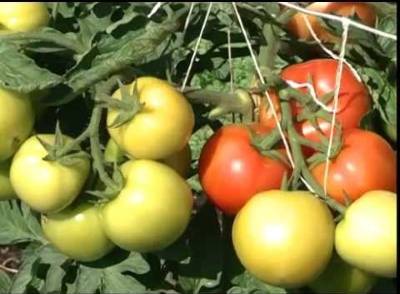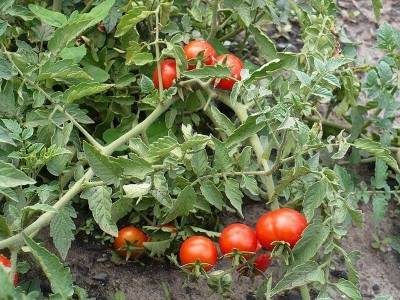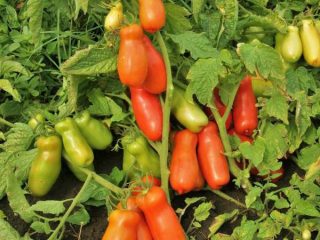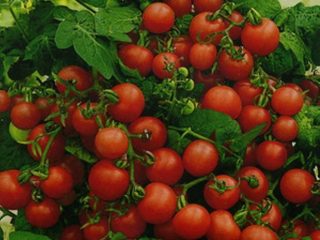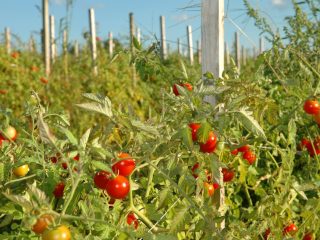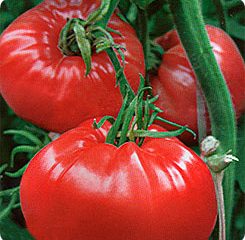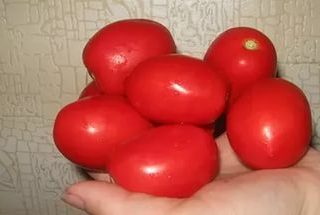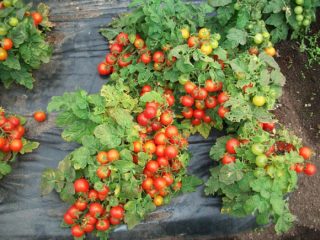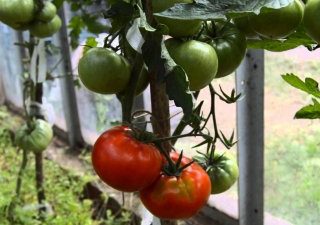Content
Tomato bushes are southern plants, but thanks to the achievements of Russian breeders, varieties and hybrids have been developed that grow in regions with cold and short summers. One of the newcomers is the Khlynovsky tomato hybrid. Its seeds have been on the market for almost two decades - it was registered in 1999. The very name of the hybrid speaks volumes about its purpose: the crop is suitable for cultivation in areas with weather conditions such as Kirov. It’s not for nothing that, under the ancient name of this northern city, scientists offer resistant tomato to amateur gardeners. The difference between positive and negative temperatures is practically not reflected on the plant of this tomato.
Typical properties of a hybrid
This tomato is recommended for growing for those who are just beginning to learn the basics of farming. The plant is so unpretentious and stable that it will rise to its given height and produce fruit, as long as the soil is weeded and watered.
Distinctive features of the bush
Although the mid-early tomato plant Khlynovsky f1 is tall, the development of the bush is limited to a height of two meters.
- The tomato bush is determinate, quite compact, but vigorous because it produces large berries. Usually the hybrid grows to 1.5 - 1.8 m.
- The plant forms 10-12 inflorescences located through two or three leaves;
- Even in unfavorable weather, the bushes of these tomatoes, adapted to low temperatures, form sufficient ovaries. If all agricultural technology requirements are met, the hybrid yield is 12 kg per 1 sq. m or 4-5 kg from one bush;
- Compared to indeterminate tomato plants, this hybrid begins to bear fruit two weeks earlier;
- Plants of this tomato have high resistance to fusarium, cladosporiosis, verticillium and tobacco mosaic.
Features of fruiting
The first ripe fruits from the bushes of this tomato can be harvested 105-110 days after emergence.
- Tomato, according to reviews from fans of home-grown vitamin products, produces large, juicy fruits that melt in your mouth. And this is only one of its valuable qualities, given that the plant is a hybrid (natural varieties have a more pronounced, characteristic taste);
- The Khlynovsky tomato shows its superiority in fruit taste and yield over a number of well-known large-fruited tomatoes;
- The fruits tolerate transportation well even over long distances.
Throughout the growing season, the tomato bush grows and develops intensively, forming flowers and ovaries, and produces large fruits well. During the active growth stage, the hybrid requires sufficient watering. It is this point that those gardeners who planted the plant on their plot point out among the disadvantages of the Khlynovsky tomato in their reviews.
Description of the plant
The bushes of this tomato are standard, with an average number of branches and leaves. The trunk is powerful and strong, capable of withstanding the 4 kg of harvest declared by the breeders. The dark green leaves of the plant are small, slightly wrinkled, and glossy. The hybrid has simple inflorescences, the first of which appears on the bush above 8-10 leaves. The following flower groups occur alternately through one or two leaves. The brushes are formed evenly, and as a result, the harvest from the hybrid bushes is collected in equal volumes during fruiting.
Fruit
The tomato produces beautiful, attractive, appetizing size, flat-round, large fruits. The surface of ripe tomatoes is uniformly red and glossy. At technical ripeness, the fruits are green, on top near the stalk, the usual spot stands out with its darker tint, which disappears in the ripening phase. The pulp is dense and fleshy. The structure of the fruit is characterized by 4 or 6 seed chambers with thick walls. The fruits of these tomatoes are distinguished by good transportability and long shelf life, due to their structure and density of the pulp.
On tomato bushes Khlynovsky f1 sometimes, with standard fertilizing and timely watering, fruits weighing up to 300-350 g ripen. The usual weight of its fruits is 180-220 g. They contain 5-6% dry matter. Excellent taste properties during tasting were highly rated: 4.8 points. The marketability of the hybrid fruits was also highly rated: 98%.
Harvest use
Delicious vitamin fruits are consumed fresh. They can be used for pickles and cutting for canned salads. When fully ripe, they are excellent for juices, sauces or pastes.
Plant care
The most guaranteed way to grow tomatoes, including hybrids, is through seedlings.
First stage
Seeds are sown in March or April in moist soil, deepening one to one and a half centimeters. The timing must be adjusted depending on the time of planting young plants in a permanent place. Seedlings must be 50-60 days old. And the soil in the greenhouse should warm up to 15-160 C. The same temperature is comfortable for tomato plants at night. During the day it can rise to 22-250 WITH.
- In the first days of seedling growth, the soil is kept slightly moist;
- The air temperature should be lower - up to 160 C, so that the sprouts do not stretch;
- Containers with young, tender stems of tomatoes are turned with different sides towards the light so that they do not grow obliquely;
- When the sprouts become strong and uniform, the temperature is increased for the successful development of young plants;
- As soon as the second true leaf appears, the plants are pruned, cutting off the tip of the central root and planted in separate containers.
There are reviews about the rapid growth of the Khlynovsky hybrid. According to the description, seedlings from f1 tomato seeds began to form inflorescences already at the age of 50 days. By the way, such inflorescences, no matter how sorry they may be, must be removed. The plant needs to devote a lot of effort to acclimatization.
Landing
First, the seedlings, which have already formed at least seven or nine leaves, must be hardened off over the course of a week by taking them out into the fresh air for several hours.
- In April, tomato seedlings are planted in heated greenhouses. Under film or non-woven covers - in May, and in open ground - until June 10-15;
- Plants should be placed according to a 70x40 pattern, so that there are no more than 3 tomato bushes per square meter;
- Feeding is also carried out: at the bottom of the hole, 4-5 centimeters away from the intended location of the tomato roots, place one teaspoon of double superphosphate;
- In the third week after planting in the ground, the tomato bushes are hilled up. Then, after fifteen days, re-hilling is carried out to form an additional root system;
- Periodically the soil is loosened.
Watering
For the first few days, the planted plants are watered in the evening every day, at the root. In a greenhouse, watering tomatoes is best done in the morning. The best option is drip systems, then water will not fall on the stem and leaves of the tomatoes. Subsequently, the area with tomatoes is moderately watered once every 4-5 days, depending on weather conditions. During the period of fruit ripening, watering becomes more frequent - this is one of the agrotechnical requirements for Khlynovsky tomatoes.
Feeding
Tomato Khlynovsky needs to be fertilized several times per season. When the first fruits reach 1.5-2 cm in diameter, feed them with a mineral solution: per 10 liters of water take 20 g of ammonium nitrate, 30 g of potassium sulfate, 10 g of magnesium sulfate and 25 ml of three percent potassium humate. Such fertilizing should be carried out every week during the ripening of the first fruit clusters.
Bush formation
In greenhouses, the bushes of these tomatoes usually grow into one trunk; in open ground, they grow two more stems.
- First, for the second stem, a stepson is left, which is located under the first inflorescence;
- Then for the third - the next one after the same inflorescence;
- All other stepsons are superfluous, they are cut off one per week, leaving a small stump on the trunk;
- It is also necessary to remove the lower leaves on all bushes - for air access;
- Tomato bushes are tied up, branches with tassels are propped up so that they do not break off under the weight of the fruit.
Caring for the plants of this hybrid is not particularly labor-intensive, and the care will be returned in the form of juicy, appetizing fruits on the table. Fresh, just picked from our garden.
